I looked at the three brushes in my hand. Natsumi said, these brushes were from her grandpa. Her grandpa liked to create poetry, write calligraphy and make painting when he was alive. By passing down his brushes, he hoped that the young generation would carry on his spirit and will in creation.

- The snowfall at Sengawa around end of November.
Three months before that, I was planning to apply for the artist residency Co-iki in Tokyo. I was wondering, as a painter, what art project I should carry out in a place I have never been to in order to interact with the local people. What methods could I use to know more about the place and the people living over there?
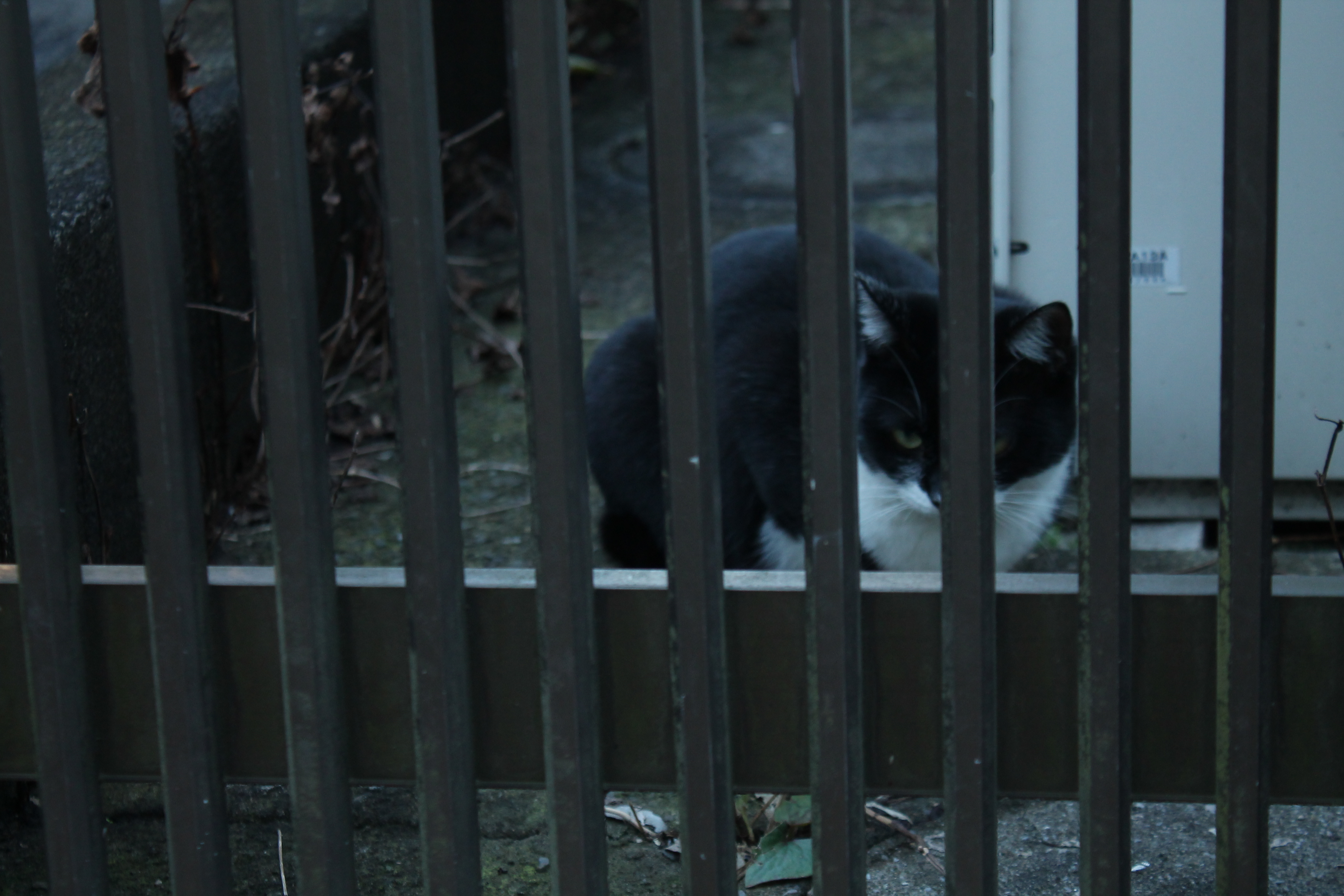
- One of the cats from the neighbour. We were staring at each other.
Then, I came up with the Barter Project. People were invited to exchange any item with my work created during the two-month stay. The artwork would be used as a medium to facilitate interaction between the participant and me.
Co-iki was where I stayed, worked and met up with people. Some people came with great interest in the project, some people came to try the Malaysian cuisine out of curiosity (yes, we did a lot of cooking too). Some participants scrutinised my artwork patiently and exchanged with items which they had carefully picked. Some participants stressed more on the interaction and the item exchange was nothing more than a symbolic act. Nonetheless, every single experience was equally interesting and meant a lot to me.
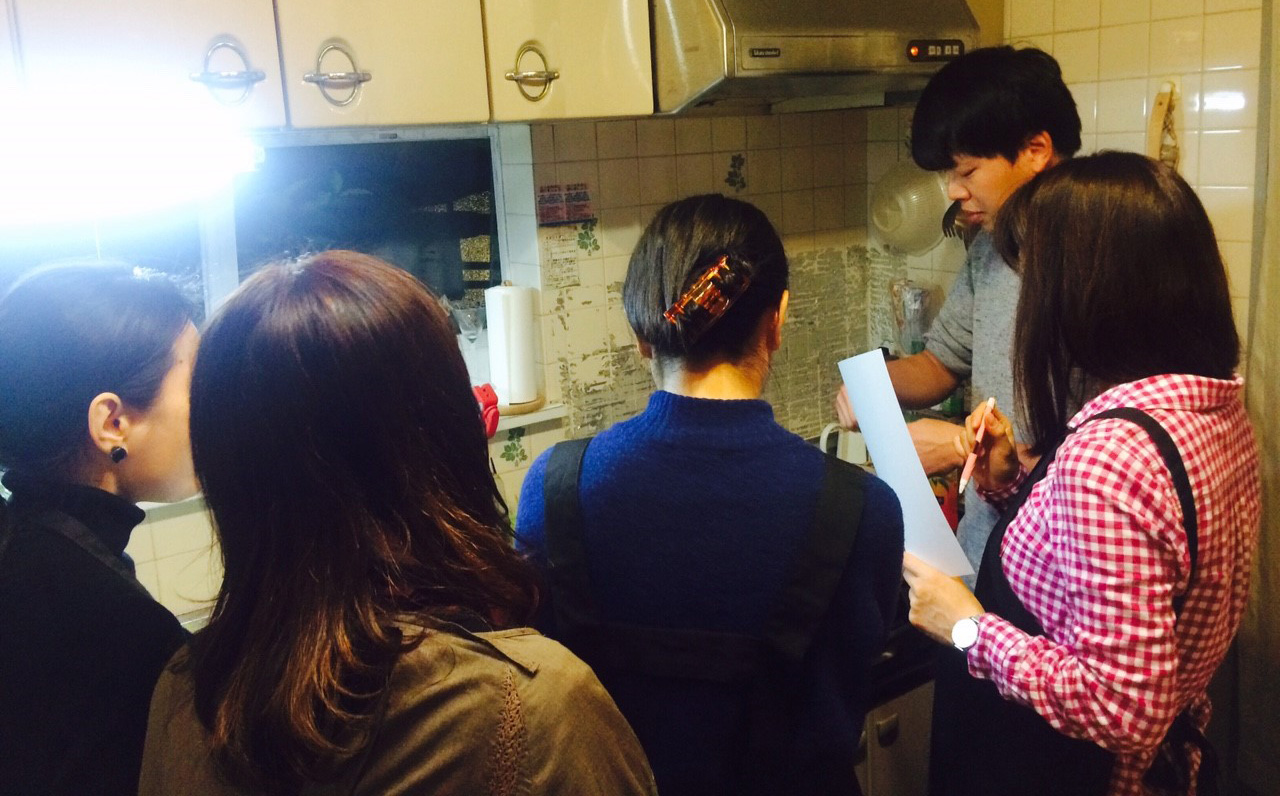
- During one of the cooking events at the Co-iki. Unexpectedly, cooking and food played a big assisting role for the Barter Project.
Throughout the project, the process involved studio visiting, party, cooking and having meal together, to name a few. Usually, the conversation started without any given topics. We talked about food, lifestyle, hobby, travelling and much more. Oh yes, sometimes art as well.
In this way, the Barter Project became a way of interaction instead of economic trading. I received a bottle of sake from a participant’s hometown, a handful of 70s postcards passed down by a participant’s grandma, a drawing from an Indian student who studied art in Tokyo, etc.
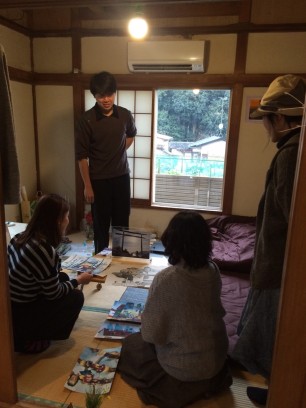
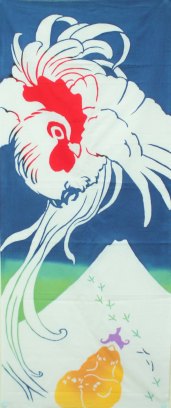
- (Left) Visitors are viewing artwork after having a Malaysian meal together at the Co-iki.
- (Right) A towel exchanged by the participant for wishing me good luck and happiness.
Hopefully, those who participated in the project had a rewarding experience from the story sharing as well as in the process of selecting artworks and items for exchange. Be the different experience gained ended up with a better understanding of oneself, or being inspired or motivated in any future endeavour.
Natsumi said, passing her grandpa’s brushes to someone after some years, to her, was an act of completing her own “project.”
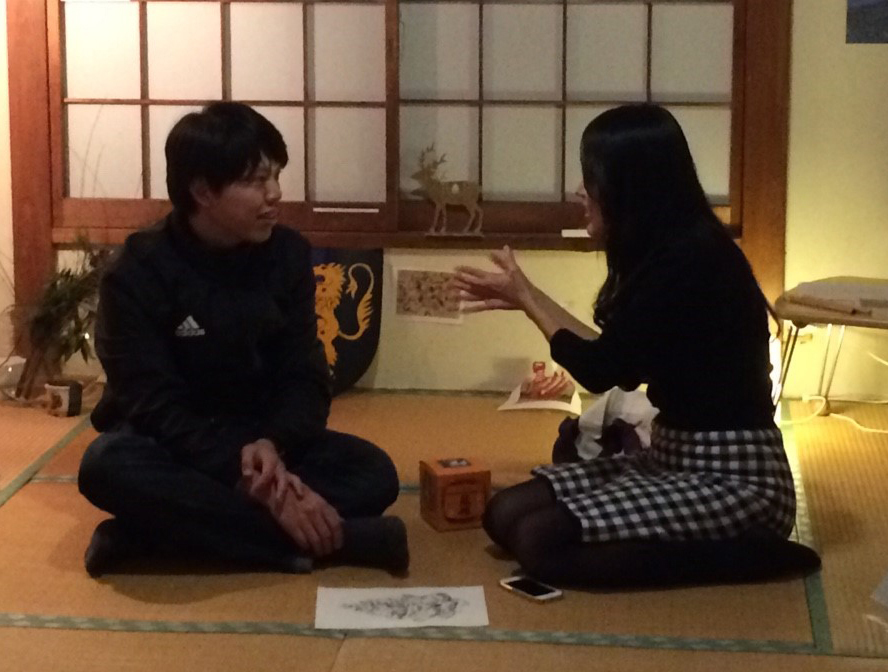
- Conversation with one of the participants and the Co-iki members.
Coincidently, the most touching experience I had in Tokyo was about item exchange. Not long after I arrived at Tokyo, I went for an evening run in the neighbourhood. Unfortunately, I broke somebody’s car park chain by running into it due to the darkness of early winter evening. I was not injured but was extremely nervous. The owners, apparently a couple in their 60s, came out in surprise but immediately gave me friendly gestures with their smiley faces. The old man knelt down to fix the chain and kept asking to me to go home. “Home back, home back.” It is Ok, never mind, they said. The lady, with a pet dog in her arms, gave me two mandarins before I left. A week prior to leaving Tokyo, I went to their place again and handed them a pack of Japanese traditional snack. In return, the man insisted to give me a pack of peanuts. “Oishi, oishi (delicious),” he said. That was one of the very few Japanese words I understood.
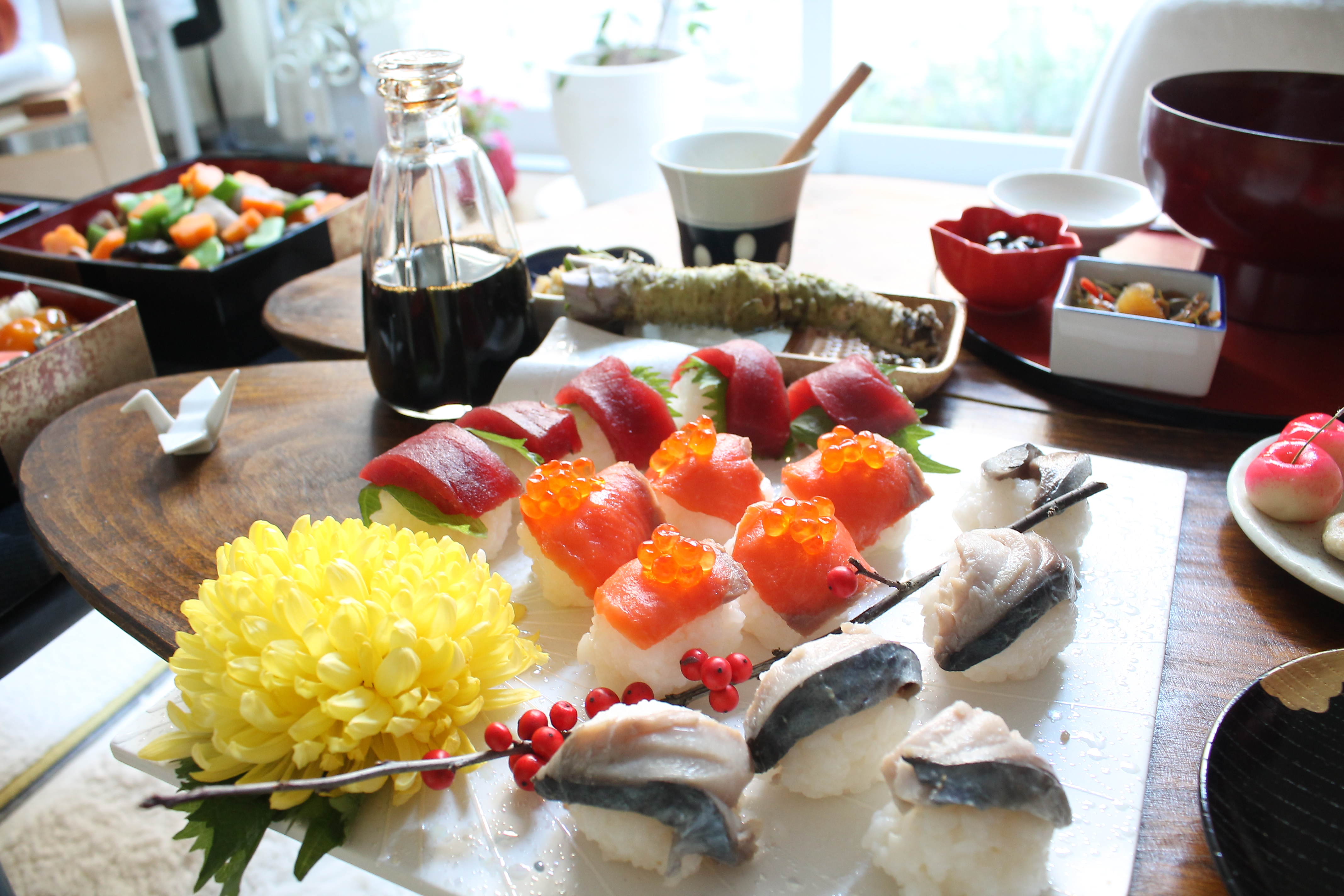
- I had a great “Osechi” (traditional Japanese New Year foods) experience at the Co-iki on the first day of 2017.
During the stay, 24 artworks were made and 20 of them were exchanged. I appreciate the sincerity and effort the participants put in during the interaction and story sharing. The project would not be realised without their active participation.
A few days before leaving for Malaysia, I received several things from Ikuko in exchange for a paper-cutting rooster I made for the New Year. She told me about her dad who worked hard in painting picture on cardboard after his retirement from his own paint store. However, he had to stop painting due to his eye disease.
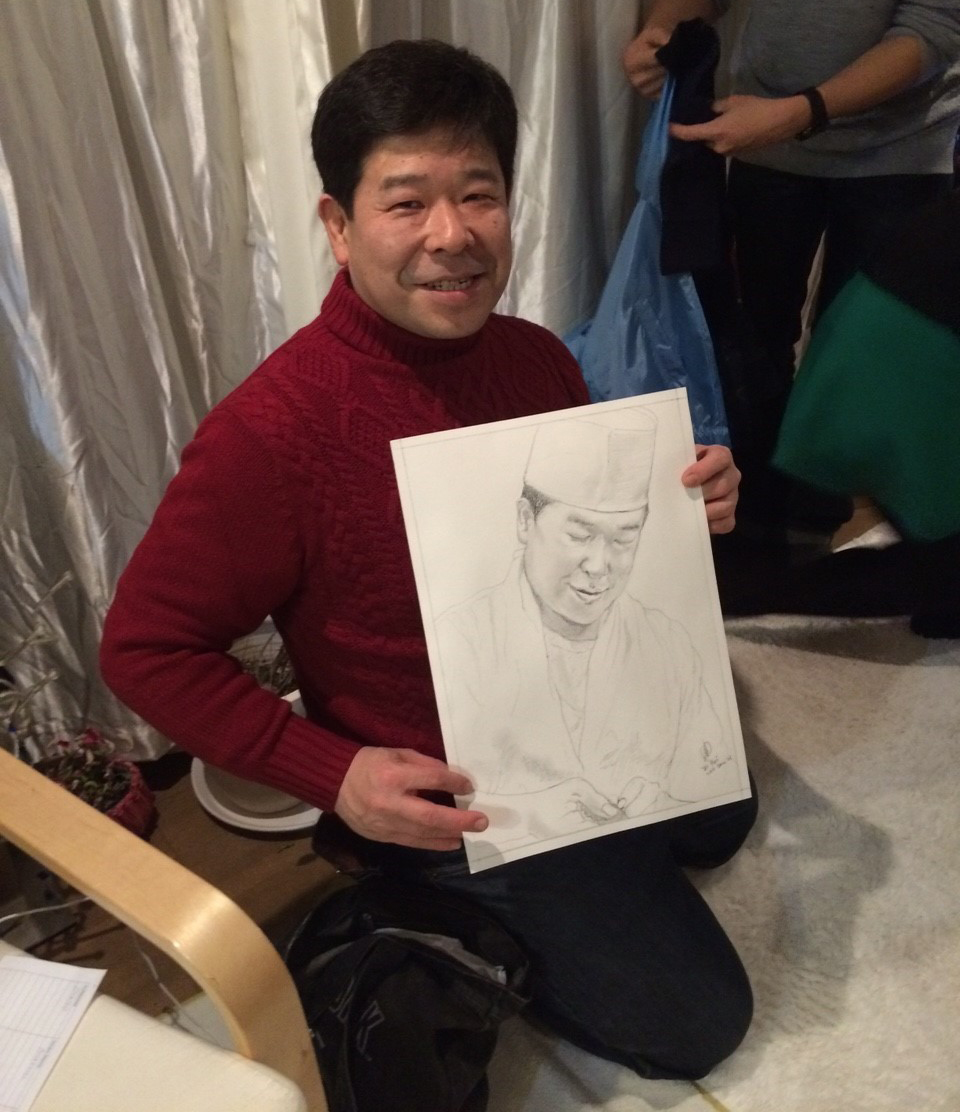
- The sushi chef, Aoki, with his portrait. This is the final work I made in Tokyo.
Two days later, I was sitting in Mr. Watanabe’s studio looking at him showing his painting in enthusiasm. He was recently busy with making a photo book of all his artworks. He had already made plenty of drafts regarding the book.
“Choose whichever painting you like for an exchange,” he said. In his studio, plenty of his works were standing against each other on the floor or lying in boxes. I got a painting which he made in his 70s. It was a work depicting a forest in blue tone.
I was well-motivated by the visit. He shook my hand hardly before I left.
While the Barter Project commenced with my art-making and followed by the exchange of items, I think, ultimately, the interaction between the participants and me has transcended the meaning of the objects. (end)
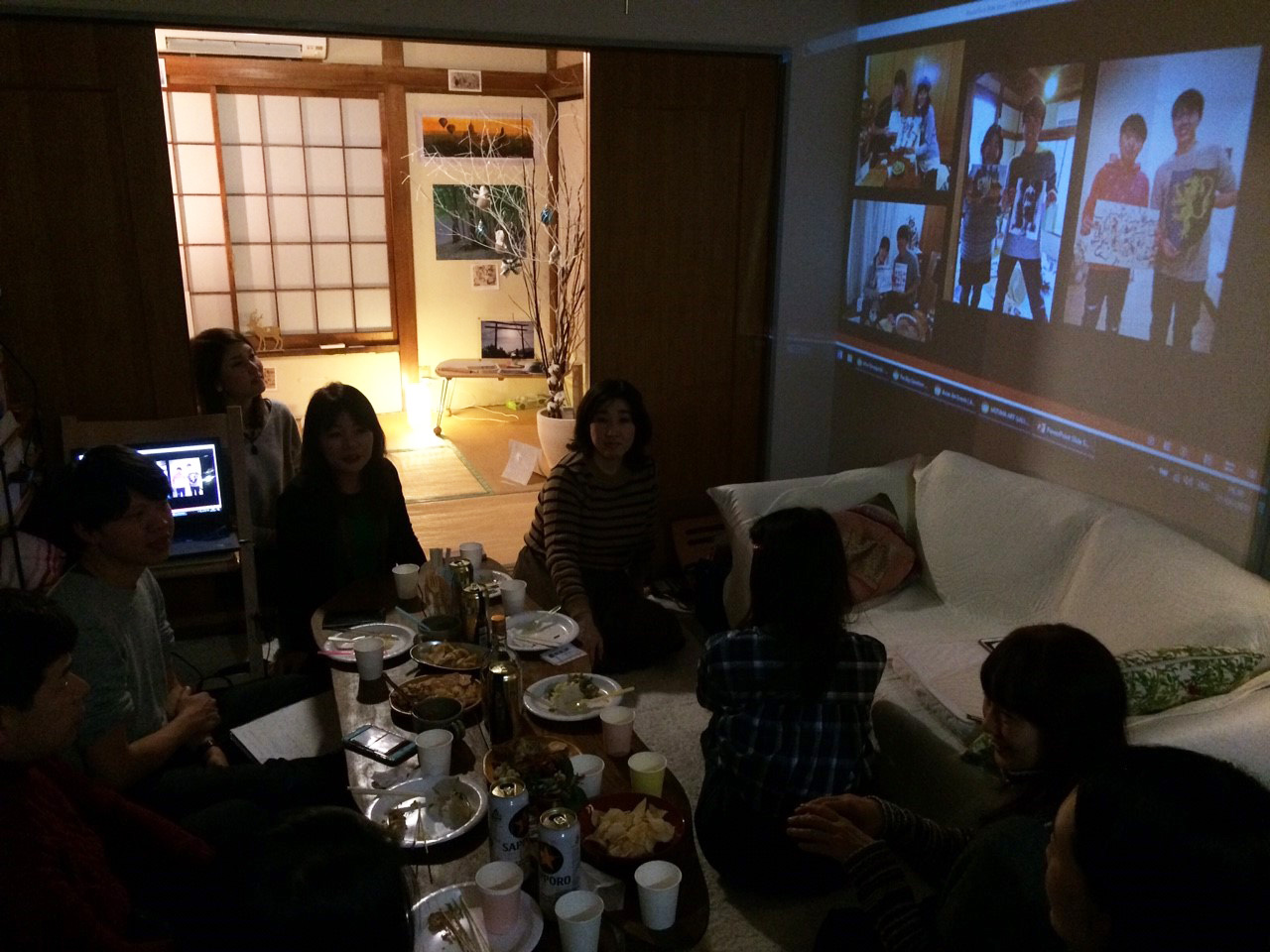
- During the sharing event at the Co-iki two days before leaving Japan.
*link to the list and photos of the exchanged artworks and items
The Barter Project
At the Arts Living Space Co・iki, Sengawa, Tokyo (http://co-iki.org/en_US/)
22 Nov 2016 – 23 Jan 2017

Excellent !
LikeLike